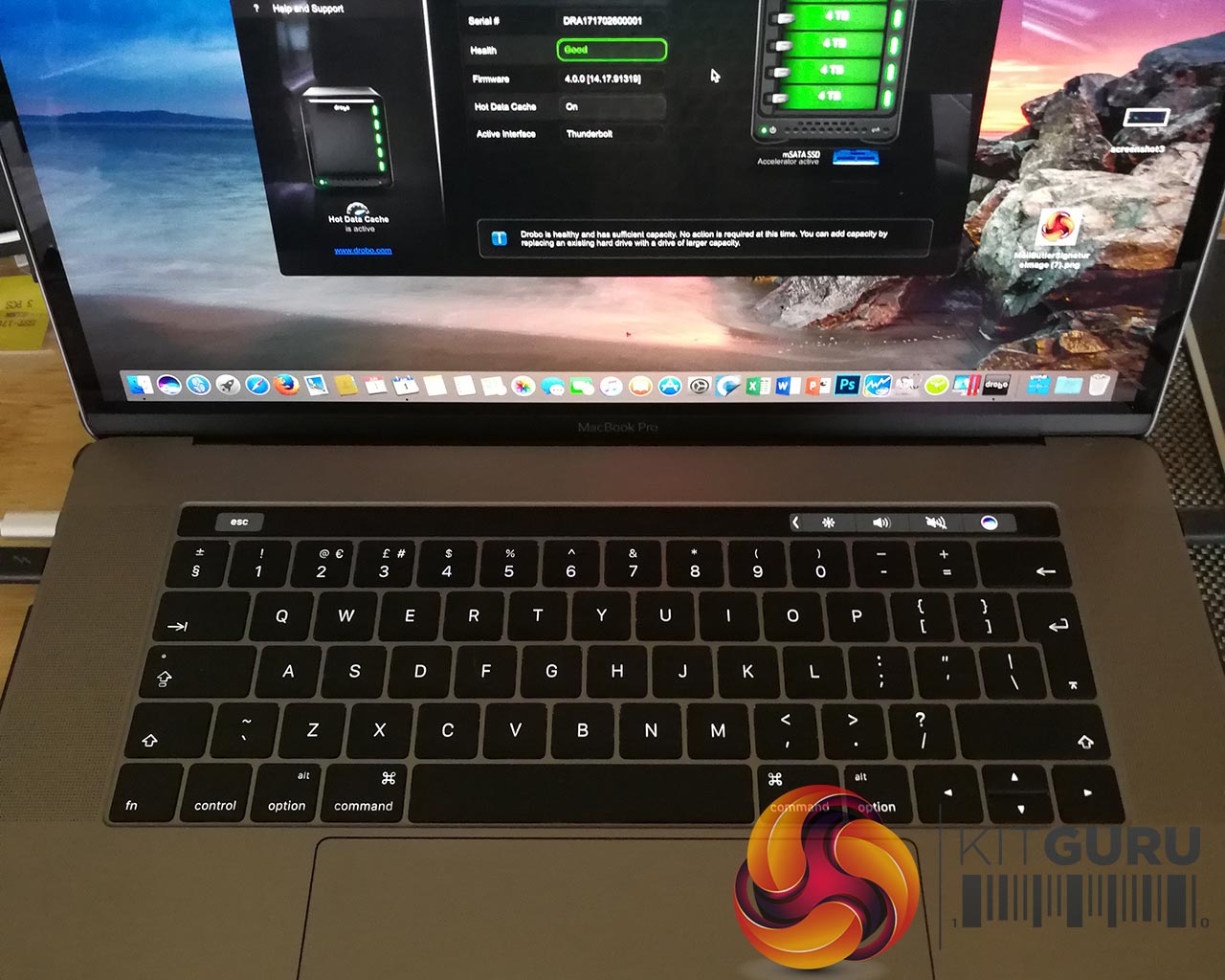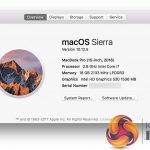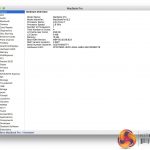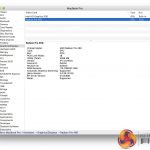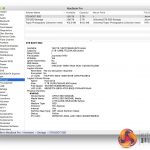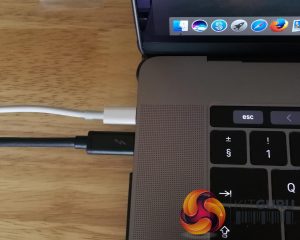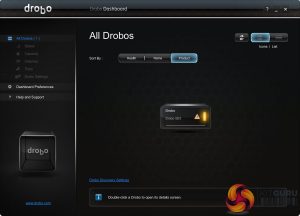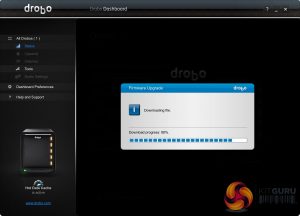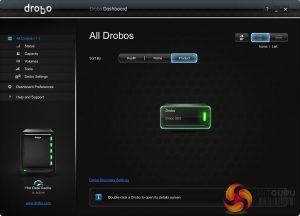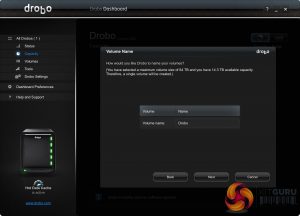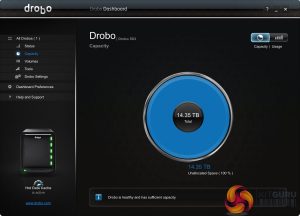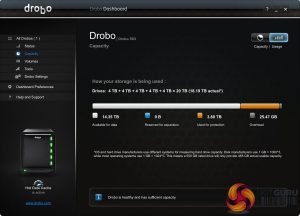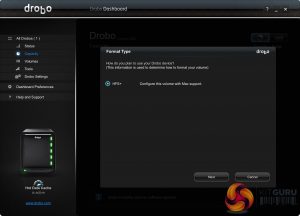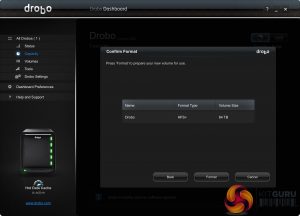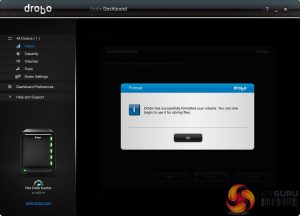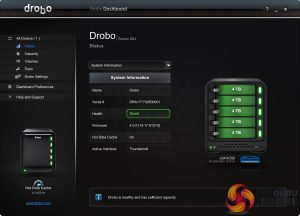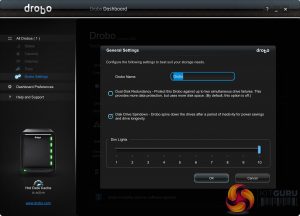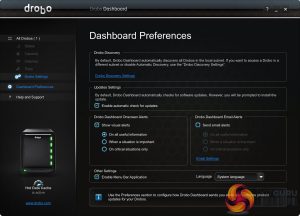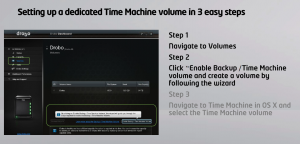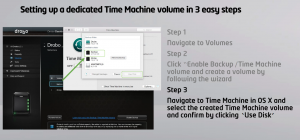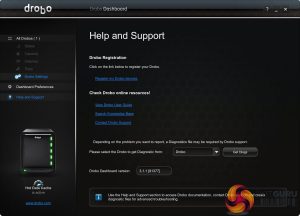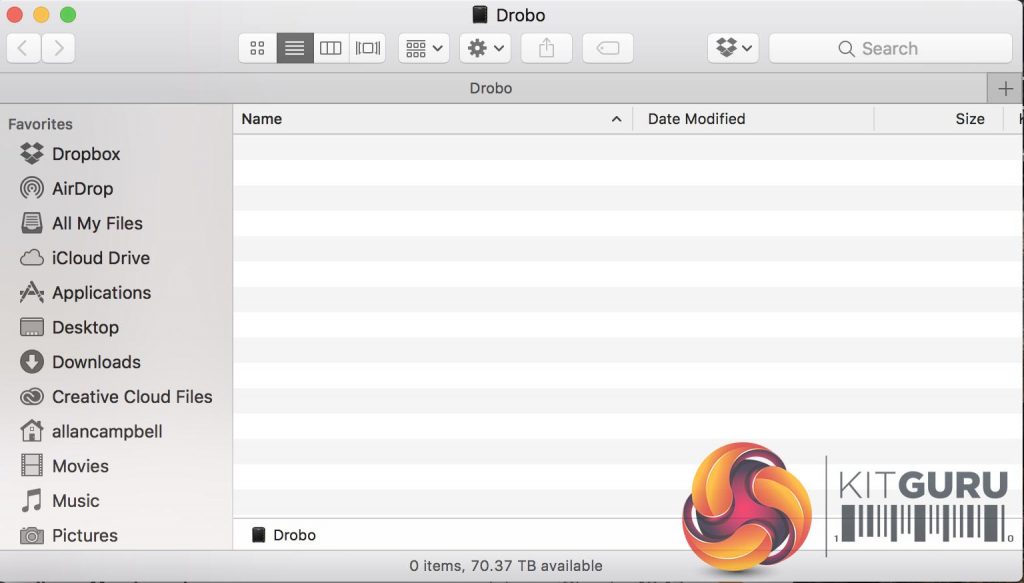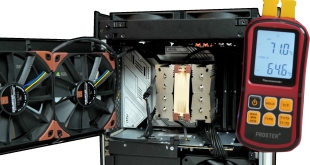Above, the highest specification 2016 Apple MacBook Pro (Space Grey) sold by Apple, featuring an Intel Core i7 6920HQ processor, 16GB of Ram, and a 2TB PCIe Solid State drive. It also features upgraded AMD Radeon Pro 460 discrete graphics.
At £4049, its certainly quite the investment. I know KitGuru has a very PC centric audience, but I really do rate Apple build quality very highly, especially their laptops.
The first course of action is to install the Drobo Dashboard software from the Drobo website.
When the Drobo 5D3 is connected to the Apple MacBook Pro and the software is loaded the above image can be seen. This shows that the Drobo 5D3 is connected but not yet ready to use. Double click on the product image in the middle.
The software immediately detected a firmware upgrade which was quickly downloaded and installed. The 5D3 then rebooted.
The Drobo 5D3 was then showing a green icon meaning it was ready to use.
You can now name the partition but I just left it with ‘Drobo'.
Checking the capacity panel shows the breakdown of the 5 x 4TB drives we installed. 20TB is shown with 18.19TB ‘actual' with basically one drive used for ‘protection' @ 3.8TB. 14.35TB is available for DATA storage.
The Drobo dashboard then requested a format of the 5 drives installed. I agreed and within a couple of minutes the software sent an alert to say the process was complete. A maximum partition size of 64TB is possible if you have big enough drives!
The General settings panel: While Drobo default the protection system to a single drive, if the data you are storing is extremely important then you can set it for Dual Disk Redundancy for added peace of mind. You can also DIM the lights here on a scale of 1-10.
Dashboard Preferences: This panel offers additional support for discovery (if you have a NAS device on your network). There is an automatic update setting as well which you should just leave enabled to ensure you are running the latest software from the company.
There are options here to change the visual alert system and you can even have the system email you alerts. The Bar Menu system defaults to ‘on' but you can turn if off, if you don't want the icon showing in your taskbar. I left it on however as its useful being able to load the software with a simple click from the finder.
As a final note, you can see an icon bottom left underneath the image of the product itself – this shows that the mSATA ‘hot data cache' is active. If you don't install an mSATA drive then this will not show.
You can also set up a Time Machine volume by creating a volume and following the wizard. I personally prefer to use Carbon Copy Cloner but you can see by the images above just how straightforward this is.
The final page entitled ‘help and support' gives quick easy access to Register your Drobo device, alongside viewing user guides, searching the knowledge base and contacting Drobo support directly. There is also an option here to create a diagnostics file to send to Drobo, if necessary. As the image shows we are using the latest V 3.1.1. (91377) of Drobo Dashboard.
Interestingly when the device appeared in Mac OS -we saw a partition size of 70.37 TB. We asked Drobo about this and their reply was:
“This is part of the thin provisioning as one of the added values of Drobo is to add more storage later without the need for reformatting.
The max volume supported is the amount you see in the OS which also shows you that it is not just ready for the common HDDs of today (the 4TB that you are using) but it is also ready for the “soon to become common” HDDs of tomorrow (10+ TB).
As you noted though, it does show it correctly in Drobo Dashboard and it also shows it correctly on the Drobo itself.”
Personally I think I would rather get the actual partition size showing in Mac OS, rather than a potential configuration I could have if I used the biggest possible drives on the market.
Also for those wondering the differences between the 64TB maximum size registered in Drobo Dashboard and the 70.37TB showing in Mac OS, this is because Drobo measures in Terabyte and Mac OS in Tebibytes.
64TB = 70,3687 TiB – so this is the same.
 KitGuru KitGuru.net – Tech News | Hardware News | Hardware Reviews | IOS | Mobile | Gaming | Graphics Cards
KitGuru KitGuru.net – Tech News | Hardware News | Hardware Reviews | IOS | Mobile | Gaming | Graphics Cards


